







Zululand s a place of unspoilt beauty, a pristine coastline, abundant forest brown muddy African Rivers and streams. Alongside a modern infrastructure off the highway nestled in the green hills can be found, rondavaals with thatched roofs set in the remnants of tradition- a ragged circle which symbolized the Zulu Tradition. Zulu people still alive and well living in these traditional huts. I have not yet seen a “township” here. The living being more brightly colored one storey structures maybe only two or three rooms tucked into the hillside.
The chief lived in the main hut, there was a hut for cooking and making the traditional sour beer. The other huts were for the wives and the children. A sub tropical climate with vivid thunder storms and heavy rains -a message from the Gods and the Ancestors reminding us they are still here! Yesterday I visited Valley of a Thousand Hills. I had lunch overlooking the hills. It has drawn me since I first visited South Africa.
I am drawn to the Zulu Beadwork, pots and incredible baskets. I feel called to Kwa Zulu each time I am in South Africa. My adopted grandmother lives close to a place called Mtunizi so I always have a reason to visit here when I come.
After leaving Durban we drove in a misty rainy morning, our destination Eshowe, the heart of Zulu land. The landscape became noticibly greener and more lush with and abundance of banana palms, indigenous trees and grasses. Rolling hills cascade into endless forests for timber production.
Here we found the Old George hotel, homemade chicken curry, Zulu Tea called Ntingwe one of the five top teas in the world (sold in Harrods we were told with pride!) and a forest lodge B and B.
We drove to the site of Shaka Zulu (Where the movie was made ) Not my normal scene, but was told it was run by Zulus and it was a traditional Zulu Village where people actually live. Geared for tourists overlooking a stunning lake, it created an Idylliic serene picture. Of course it is a tourist attraction, however it is run by Zulu people and carries with it more of an authenticity as they take great pride in their culture. It was informative and we did learn about Traditional Zulu culture and saw some beautiful, unusual beadwork, baskets, pots and woodcarvings. These objects were used in daily life, and also linked to rituals which called the ancestors (amadlozi) honoring them.
The work is still an integral part of the continuing cycle of life. Their use transmitted and still do cultural traditions carried through the centuries of Zulu culture. Until very recently indigenous southern African cultural expression was excluded from curricula in South African schools. In the contemporary free market system many crafters there are intrepreneurs, selling their own work as well as that of their community. Now the Zulu cultural tradition evolves, according to what needs are identified by those who make a living from it.
Beadwork has featured highly in courtship rituals for marriage and love letters are made from beads.
Cultural expression is very dynamic! Song, artwork, beadwork, and metal work is vibrant colorful, and soulful. With a constant assimilation of a variety of styles the Zulu’s are able to express their daily experience.
The scenery here is spectacular. It is lush, with banana Palms, grasses and indigenous trees. There was a real sense of “warrior “ energy reminiscent of the days of King Shaka Zulu who is buried in Stanger close to Shakazululand.
King Shaka changed the entire community of Zulu Land uniting it in their tradition and culture.
The women sit on grass mats on the ground to make the jewelry. Mostly they are made of glass but few are made of seeds. The work is colorful. Time is taken to thread together tiny beads in intricate mathematical patterns.
Traditionally it was the men who did the wood carving and metal work and women did beadwork and pottery, the grass weaving being shared by both genders.
Zulu women have been making clay pots for hundreds of years. They are used to store beer food and sour milk. I love them, simple designs, black and brown that come in mostly two shapes. Like the beadwork the pots serve in symbolic rites and social customs. The pots are fired in a shallow pit, using aloe and ash, their hues are earthy and when shone with fat they glisten. The smooth blackened surface of the pot is said to attract the “shades” the ancestors.
Baskets were woven with grass and strands of llala (palm leaves) In the past baskets were buried with the dead and also were included in a brides dowry. Now they are used to store food, medicine and beer. The baskets are exquisite, in design and color.
I saw plastic bottles fashioned into boxes exquisitely painted. We have much to learn from these peoples about recycling!
The history of telephone wire weaving, comes out of the migration of male workforce who moved from rural Kwa Zulu Natal to large cities. whilst living away from their families they wiled away the time as nightwatchmen by weaving off cuts of colored wire from electrical security systems.
Now these amazing baskets have become sought after and female weavers are emerging supported by such projects as the Siyanda Project, spoken about in the last post out of the African Arts Center in Durban where the women are being taught and coached to bring their flair individuality and genius to the work and not just turn out the same work that you can see along the golden mile waterfront in Durban, where many stalls are set up to sell brightly colored beaded jewelry and simple wooden carvings.
All of these beautiful cultural expressions has provided opportunities for the Zulu people to make a living.
More people are working with the communities to support the local people, by going into the villages and township and buying directly from the artists.
Eshowe is a sleepy town elevated to the top of a hillside, it is serene. It organically blends tradition and modern and it works in its own way. It boasts a mall the pride of the New South Africa -THE MALL and DENIM. It is said that four Zulu Kings have at some stage lived here.
It has a 250 hectare forest and a refreshing climate. A walk on the ariel boardwalk in the Dlinza Forest takes you close to the trees. This forest contains many rare birds such as the Spotted Thrush, their noise and chirping loud and vocal. But always in unison it seems.
To look down from the boardwalk into this beautiful vegetation calls the imagination to goblins and fairies and magic! On the ground we found species of trees with many medicinal purpose. Bush buck, tiny antelopes about 2 feet high peeked at us through the trees. Our own personal guide appeared from nowhere to track us to make sure we did not get lost or attacked by wild pigs. He gently wound spiders webs around his fingers to clear the way, so we would not get bitten. It was almost like watching a dance, as he bent and twined the web and laid it tenderly on a tree. The trees were wrapped in thick vines that twisted up to the sky and hung down to the ground only to re root and shoot up again. These our guide said were predator trees the vine eventually killing the tree they wrap around. The base of the tree are in segments, roots exposed, reminded me of a time many many years ago. Definately an Avatar forest, where one would not walk at night.

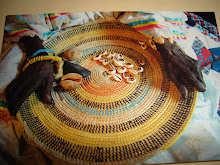











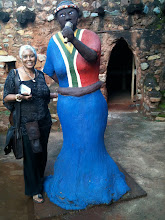













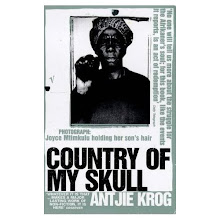
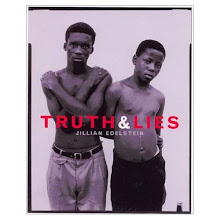


























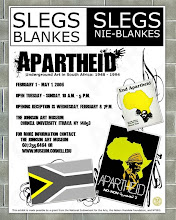



























2 comments:
Sounds so beautiful!! An amazing share, thank you..
What a wonderful website. I have a great love for Africa. I help with basic care for an orphanage in Tanzania. Take a look at my website:
www.ubuntuorphans.com
You have a wonderful soul!
Post a Comment